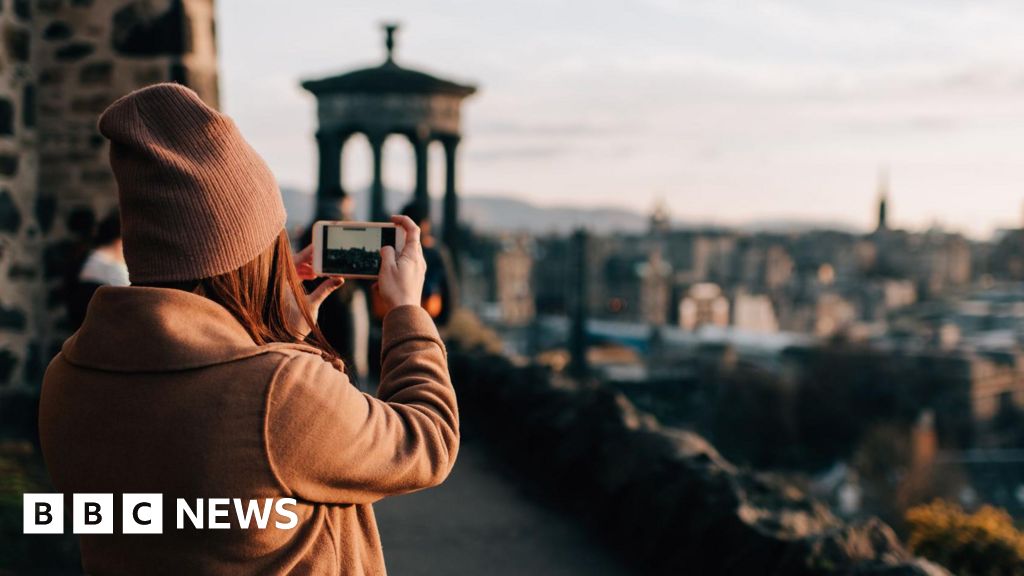Travel
What is Scotland’s planned tourist tax and how much will it cost? – BBC News

Image source, Getty Images
MSPs are due to vote on a plan to introduce a tourist tax in Scotland.
If passed, the Visitor Levy (Scotland) Bill would allow local authorities to add a charge to overnight accommodation such as hotels, B&Bs and holiday lets.
Why has a tax been proposed?
Many European countries, including parts of Germany and Spain, already have levies.
Venice in Italy now charges day-trippers an extra fee as part of efforts to control visitor numbers.
Manchester introduced its City Visitor Charge last April to pay for measures aimed at attracting more visitors.
Image source, Getty Images
The idea of a Scottish tourist tax has been kicking around for a while.
Tourism is one of Scotland’s biggest industries, but some areas say they do not have the services and facilities to cope with demand.
Edinburgh, Highland and Aberdeen were among councils supportive of the idea of a tourist tax six years ago.
In August 2019, Highland Council calculated it could generate as much as £10m a year from a levy, and reinvest the money into improving infrastructure such as roads, car parks and public toilets.
In 2019 the Highland tourist numbers hit a peak of seven million visitors.
The Covid pandemic hit tourism, but there have been recent signs of recovery and in 2022 there were more than six million visitors to the area.
How would it work and what could it cost?
The fee would be a percentage of the cost of overnight accommodation – minus commission the provider pays to any online booking service and room “add-ons” such food and drink.
Accommodation providers would be responsible for collecting the charge and passing the money on to their local authority.
Each local authority would be able to decide if it wanted to introduce a charge and what the level of the charge should be.
Seventeen of Scotland’s 32 councils, along with national body Cosla, back the introduction of a levy, according to Scottish government consultation.
How has the industry reacted?
Marc Crothall, of the Scottish Tourism Alliance, worries it could harm trade – particularly among UK visitors who he says make up about 65-75% of holidaymakers – and put at risk the industry’s 250,000 employees.
He says: “Tourism is everybody’s business and touches every household.
“If you are a florist, a plumber, or a joiner you are going to be working for tourism businesses.”
Ollie Hughes, who took over the Ben Cruachan guesthouse in Edinburgh in 2019, says the Covid pandemic hit businesses like his hard and recovery had been hampered by increased running costs.
He says: “The visitor levy would not be the nail in the coffin for us, but certainly would be for other businesses.”
Mr Hughes says room charges would need to increase to cover the tax. This could then push businesses over the VAT threshold resulting in further administration charges.
“You are then not even an unpaid tax collector, you are penalised for collecting taxes,” he says.
Stacey Dingwall, head of policy and external affairs at the Federation of Small Businesses Scotland, says businesses are concerned about extra admin costs.
She says there would be an expectation money raised was reinvested locally.
When could the tax be introduced?
Image source, Getty Images
The Scottish government has suggested 2026, depending on timescales.
And City of Edinburgh Council could be the first city to put in place, says leader Cammy Day.
He says: “The city has campaigned for the last decade or more to try and bring in a visitor levy for the city to raise some essential income for the capital.
“People pay a few extra pounds to help contribute to the running of the city.
“The Royal Mile and the heart of Edinburgh at Festival time is awash with hundreds of thousands of people – which is great for the city – but it also creates additional pressures on services.”




